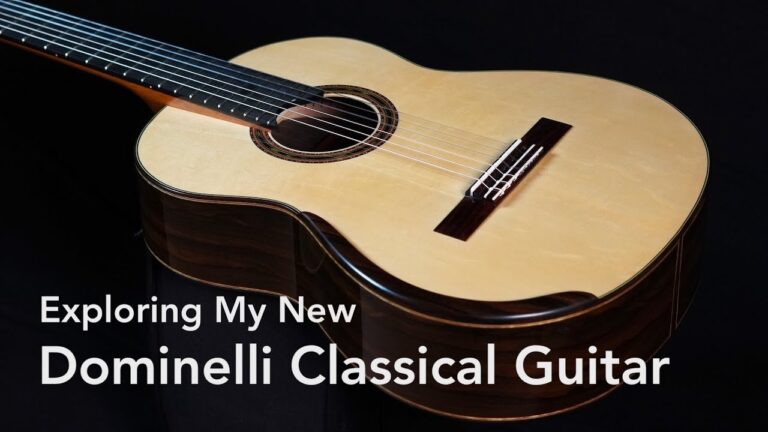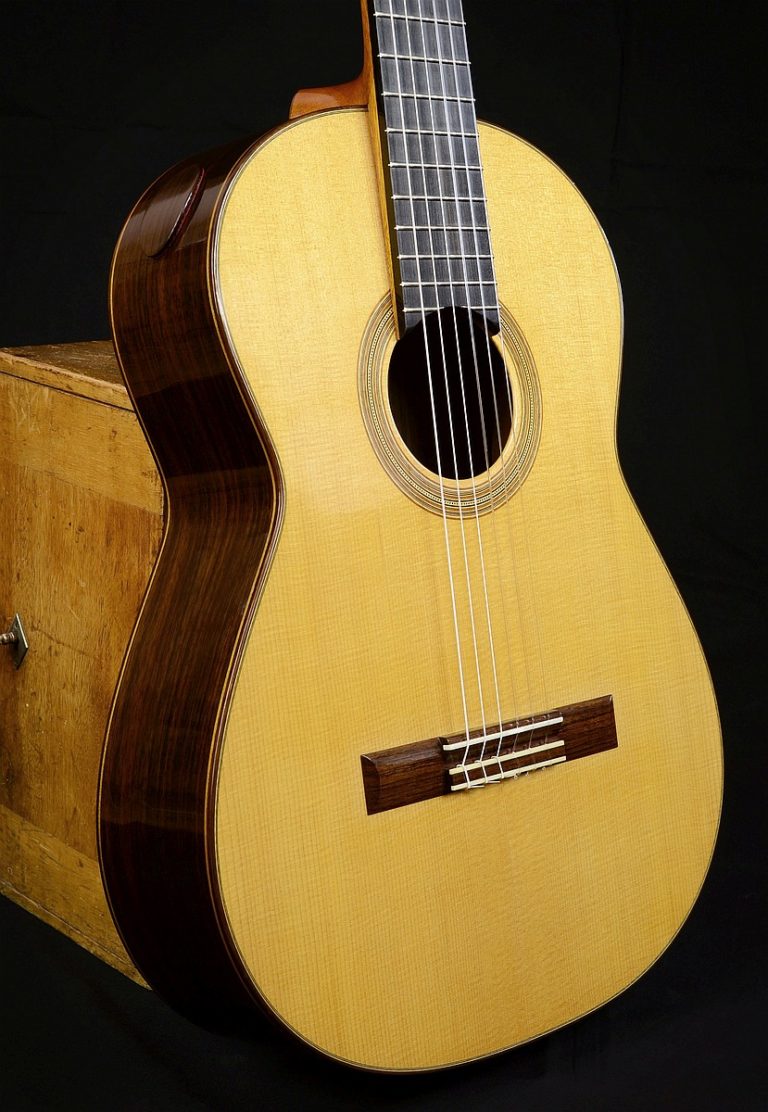Elevated Fingerboard (or raised fingerboard) is actually a bit of misleading name as it’s the top of the guitar that slopes down. Nevertheless, I will never go back to playing guitars without a raised (elevated) fingerboard. They are simply easier to play and allow great reach and playability in the upper positions. In a way, the snobby and negative response of players toward cutaway guitars really makes no sense at all. In a cutaway, the luthier has designed an instrument for the player! However, despite the fact that I realize this I can’t seem to bring myself to buy a cutaway (not that many high-end classical luthiers build them…although that is changing). So, the raised fingerboard gives the player some extra reach and a traditional looking instrument which seems like a good compromise.
Also worthy of considering is the change in design and sound of any alteration be it elevated fingerboards or cutaways (for better or worse).

I talk a bit about the raised fingerboard in this video demo of a Douglass Scott guitar.
Marcus Dominelli on elevated fingerboards:
Over 90% of my clients order this feature with thier guitar. The top of the fingerboard is a full 20mm above the soundboard at the 12th fret, giving the player much better access to the upper register. On my guitars the neck is one continuous piece right to the soundhole – no butt jointed wedge from the 12th fret to the soundhole like you might see on other guitars.
Also, because of the extra mass under the fingerboard in this area, the notes tend to have better sustain than with a traditional non-elevated fingerboard.
Fritz Mueller on elevated fingerboards
An elevated fingerboard is a standard feature on all my instruments. The primary advantage is improved left hand playability on the upper frets, although the increased distance between the strings and the top is also advantageous for the right hand.
At the neck/body joint the distance from the surface of the fingerboard to the top is 14 millimeters, a comparatively moderate distance, but one that players tell me is adequate and very comfortable. I have created the elevation of the fingerboard by giving the neck a negative angle in relation to the guitar body, rather than by changing the configuration of the upper bout, as a few other builders (Tom Humphrey on his Millenium guitars and Greg Byers, for example) have done. The elevated fingerboard on my instruments is visually unobtrusive, and the guitar retains its traditional appearance.
More on elevated fingerboards:
There is an excellent thread on Delcamp HERE with input from Thomson, Dominelli, Carruth, etc…
There is a great deal of discussion on how the design alters the sound. From my own experience I’m not sure the difference in sound is very noticeable. It is probably there but very subtle. However, the difference in playability is huge. As I said before, I will never buy another guitar without a raised fingerboard. I also don’t know of anyone else who has “gone raised” and is willing to go back.
Your thoughts?





I am confused! A relatively normal state of affairs. I thought an elevated fingerboard was so that the sound board had less mass or just stuff to interfere with it’s vibration. Am I just wrong or conflating ideas?
I have heard that from luthiers but I believe the main reason from players/buyers perspective is playability in upper frets…I know it is for me.
If access to the upper frets is the goal, why not cutaway?` if you’re concerned about the cavity space reduction it would take very little thickness, about 1/4” to make up for it. I don’t anyone could hear a difference, cutaway vs non-cutaway, maybe the traditionalist nature of the classicalguitar crowd is just more accepting, visually of the raised fingerboard than they are of a cutaway.
Yes, the traditional crowd wants the traditional look. Also, it’s a matter of finding top notch luthiers that actually built cutaways. They exist but are certainly the minority of classical luthiers.
Raised or not raised…just a matter of what makes you more comfortable and confident in your playing. Segovia seems to have done pretty well without a raised fingerboard, though.
Yes, everything can be played without a raised fingerboard but the level of playing has come a long way since Segovia and the compositions are using high C notes and more active in the upper extreme registers that Segovia generally didn’t work with. The raised fingerboard becomes a helpful addition to the musical tool we call guitar. I’ll never go back!
Very interesting devellopment and courage shown to apply it! On the other hand, other classical instrument like the double bass and violin e.g. have had raised fingerboards for centuries, albeit not in contact to the top. Just a hint of the brilliance of other master instrument builders. I very much like the application to the classical guitars.
Yours sincerely, Kin-Yip Cheng – maelstromguitars
Thanks for the photos and points of view. As a builder of classical guitars I have been seeing more and more classical guitars with elevated fingerboards. There are many methods to construct such a guitar and its helpful to read other peoples opinions.
The photos are instructive:
It appears Dominelli attaches his elevated fingerboard to the neck and perhaps does not use a Spanish heel. Mueller addes a triangular block of wood between the top and fingerboard. While I can’t be sure of this, is does look as those the wood on the Dominelli guitar’s neck is one continuous piece while it seems to be two separate, but well joined, pieces in the Mueller photo. Interesting!
Musically,
Paul Weaver
LamareGuitars.com